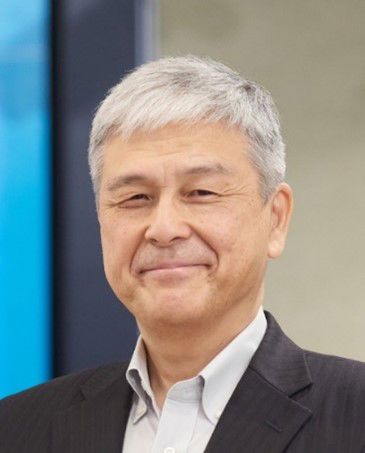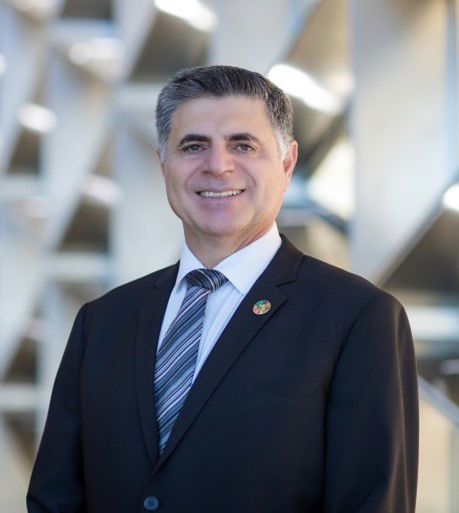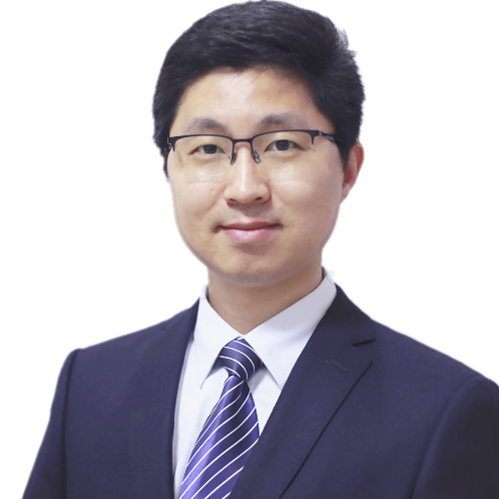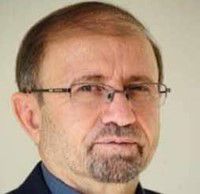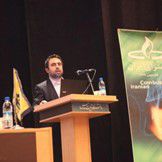


آخرین مهلت ارسال چکیده
1404/06/07اعلام نتایج داوری
1404/06/14تاریخ شروع کنفرانس
1404/08/06 38 روزتاریخ پایان کنفرانس
1404/08/08 40 روز
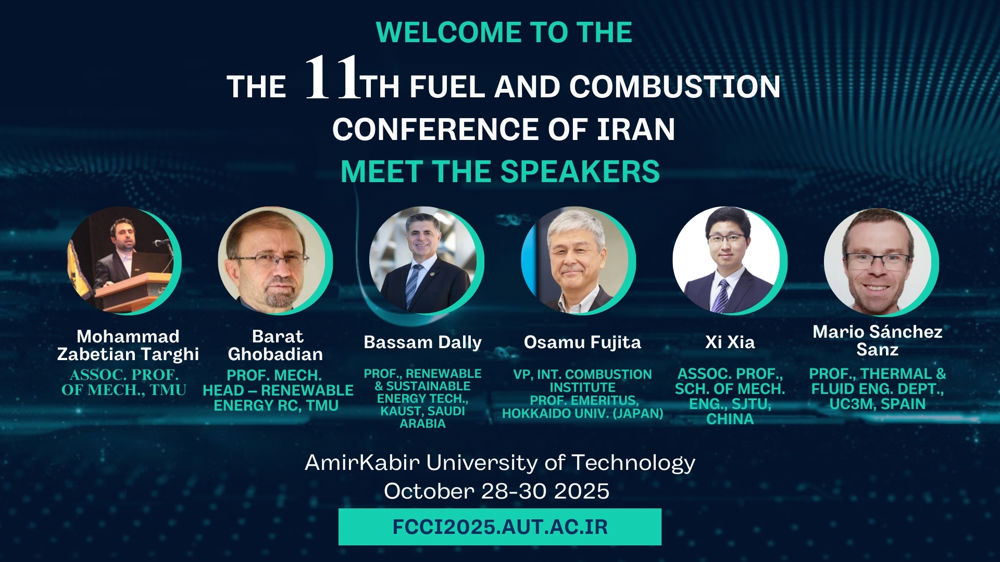
|
|
Osamu Fujita Vice-President of International Combustion Institute Professor Emeritus at Mechanical and Aerospace Engineering Hokkaido University, Japan
|
Title:
Research on solid material flammability in microgravity
Abstract:
Combustion phenomena are accompanied by rapid heat release, resulting in large temperature and density gradients. Consequently, combustion is always influenced by buoyancy-induced flow under normal gravity, which complicates understanding the elementary processes involved in combustion. To overcome this challenge, a microgravity environment is a powerful tool for gaining better insights into combustion phenomena, and many research activities have utilized microgravity in this field. In this Keynote lecture, general information about methods for microgravity combustion research will be introduced, including the drop-tower in Hokkaido, Japan, constructed in 2006, and the Solid Combustion Experimental Module (SCEM), currently in operation onboard the ISS/KIBO module in orbit. Furthermore, the essential role of microgravity in combustion research will be discussed from both scientific and practical perspectives.
One of the ongoing projects is the FLARE (Flammability Limits at Reduced Gravity Experiment) project, in which the author’s group is involved to study flame spread and ignition phenomena of electric wires. The recent results, including modeling flame spread over electric wires and numerical simulations of overloaded wire ignition, will be presented as examples of the contributions microgravity research.
Biography:
Dr. Osamu Fujita is a Professor Emeritus of Mechanical and Aerospace Engineering at Hokkaido University. He is involved in research related to Microgravity Combustion, Fire Science, Flame Dynamics of premixed flame, Carbon neutral combustion. He received his B.S. (1982), M.S. (1984) and Ph.D. (1987) from Hokkaido University. He was a visiting professor at University of California at Berkeley (1994). Dr.Fujita has authored over 200 reviewed papers in the area of combustion and microgravity science. He served as a president of the Combustion Society of Japan (2017-2019), a president of Japan Society of Microgravity Application (2017-2021), a vice-president of Japan Society of Mechanical Engineers (2019-2020). He is now serving as a vice president of the Combustion Institute (CI, 2020-2028) and Program Co-Chair (2024-2026) of the 41st International Combustion Symposium. He is a recipient of Best Paper Awards of JASMA (2006, 2018) and JSME (2007) and of distinguished paper award of 39th International Combustion Symposium.
|
|
Professor Bassam Dally Renewable and Sustainable Energy Technology KAUST, Saudi Arabia
|
Title:
Innovative Technology for Ammonia and Hydrogen Adoption to Industry
Abstract:
As the world moves to a Circular Carbon Economy mode, fuels such as hydrogen and ammonia have been suggested as viable alternatives to fossil-based fuels. Intense research efforts are underway to adopt those fuels to the many industrial systems that are currently operated on hydrocarbon fuels. The heavy industry is responsible for a third of CO2 emission and most of the emission comes from generating thermal energy rather than power. Also, most of this thermal energy is at high temperature or involve reduction processes that are deemed hard to abate. This seminar will focus on research activities to develop innovative technologies that utilizes hydrogen and ammonia and can be adapted to heavy industry. Examples of current research efforts, findings and further development will also be presented and discussed.
Biography:
Bassam Dally is a Professor of Mechanical Engineering, at King Abdullah University of Science and Technology, KAUST, Saudi Arabia. Over the last 34 years, Prof Dally work was focused on a variety of research topics related to energy conversion, decarbonization and technology development. He has expertise, in mineral processing, combustion, renewable energy, hybrids and alternative fuels production and utilization. Besides his well-cited scholarly work, including ~400 peer reviewed papers in leading scientific journals and conferences, Prof Dally has also authored 17 industry reports, named on 3 patents and managed industrial projects worth more than $10m. Prof Dally has also established and currently leads an industry-government-KAUST consortium, Future Cement Initiative (FCI) in Saudi Arabia. This initiative aims to ensure sustainable production of cement into the future, through advanced research, development and deployment of innovative solutions that are in synergy with Vision2030 and future decarbonization plans. Previous positions include, head of mechanical engineering, deputy director of the centre for energy technology (University of Adelaide) and stream co-lead in the KAUST circular carbon initiative. Prof Dally is also the president of Saudi Arabian Section of the Combustion Institute He won many awards over the years, including ‘Energy Professional of the Year in South Australia’, and recently was awarded a Fellowship of the Combustion Institute.
|
Associate Professor Xi Xia School of Mechanical Engineering Shanghai Jiao Tong University, China |
|
Title:
Dynamics of vortices in unsteady combustion
Abstract:
The emergence of vortices in fluid is usually a manifestation of hydrodynamic instability. In combustion, the reacting flow is also susceptible to various types of instabilities, which may give rise to vortex formation. The subsequent vortex-flame interactions can strongly influence the flame structures and dynamical features and pose serious challenges to combustion stability. This motivated us to study the dynamics of vortices in unsteady combustion by focusing on two fundamental questions: 1) how does flame influence the formation and behaviors of vortices and 2) how do vortices affect the flame dynamics? In this work, we employed time-resolved laser diagnostics to simultaneously capture the evolutions of coherent vortical and flame structures. I will demonstrate how such diagnostics and analysis can help advance our understanding of vortex and flame dynamics in unsteady combustion, through several examples of jet diffusion flames and premixed swirling flames.
Biography:
Xi Xia is an Associate Professor at Shanghai Jiao Tong University (SJTU). He obtained his Ph.D. from the University of Florida in 2016. His research revolves around vortex dynamics and aerodynamics for unsteady problems of both non-reacting and reacting flows. Dr. Xia has published more than 50 research articles in the leading journals of the area, including PNAS, Journal of Fluid Mechanics, Combustion and Flame, Proc. Combust. Inst., etc. Since 2023, he has delieved over 10 invited/keynote lectures in academic conferences on topics related to vortex-flame interaction. As the Principle Investigator, he was funded by more than 10 research projects, including 4 from the National Natural Science Foundation of China (NSFC). He received the ‘Young Investigator’ Award in the 12th Asia-Pacific Conference on Combustion (ASPACC 2019), and was a member of the Program Committee of the Chinese National Combustion Symposium (2022-2024).
|
|
Mario Sánchez Sanz Professor of Thermal and Fluid Engineering Department Carlos III University, Madrid, Spain
|
Title:
Exploring the survival of premixed hydrogen flames below the lean flammability limit
Abstract:
Ultra-lean hydrogen flames, which can ignite unintentionally due to leaks near a heat or power source, pose significant safety risks. This study investigates why flames propagate at equivalence ratios below the theoretical flammability limit (φl = 0.255), where the equilibrium temperature equals the crossover temperature. To find the answer, we use detailed chemistry to study the conditions that explain recent experimental observations of flame propagation in confined channels at equivalence ratios φ < 0.2.
Our research considers a two-dimensional geometry of two parallel plates separated by a small distance to form a straight channel. Adiabatic and isothermal boundary conditions are considered at the walls to evaluate the effect of heat losses on the survival of the flame. The flame curvature, caused by the confinement within the narrow channel, leads to the formation of a high-temperature region near the center of the channel. This region is surrounded by unburned gas flowing close to the channel walls. The reaction is then sustained by the hydrogen that diffuses from the low-temperature region to the reactive front. This behavior is unique to fuels or fuel blends with sufficiently high mass diffusivity and does not occur when the Lewis number is near or above unity. A new scaling, that accounts for the flame curvature to define the characteristic velocity and lengths scales, is proposed to describe the flame dynamics at equivalence ratios near the flammability limit.
According to our research, self-sustained 2D hydrogen flames may exist at equivalence ratios as low as φ = 0.15, a threshold determined by the existence of a stationary flat flame that is unaffected by heat losses.
Our findings reveal that imposing adiabatic or isothermal boundary conditions on the walls plays only a secondary role in flame survival. The propagation velocity and flame shape are shown to be largely independent of heat losses. Instead, hydrogen’s high mass diffusivity becomes the primary driver, inducing a significant flame curvature that creates a high-temperature region locally enriched by the rapid diffusion of hydrogen from the cold mixture towards the reactive front. Furthermore, this work introduces new characteristic velocity and length scales, specifically tailored for ultra-lean equivalence ratios, where planar flames cannot exist.
Biography:
Mario Sánchez Sanz obtained his doctorate in May 2007 in the Mathematical Engineering program at Carlos III University, funded by a competitive FPI fellowship and supervised by Antonio Sánchez and Amable Liñán.
After graduating in May 2007, he moved to the School of Aeronautics at the Polytechnic University of Madrid (UPM) with a postdoctoral contract "Juan de la Cierva". In November 2007, he secured a position as an assistant professor at UPM, which he left in September 2011 to join the Fluid Mechanics Department at Carlos III University as a visiting professor, becoming an associate professor in June 2012. In December 2021, he became full professor of Fluid Mechanics.
He was awarded the "José Castillejo" postdoctoral fellowship twice (2008 and 2010) for research stays abroad, which he used to initiate research collaborations with the Mechanical Engineering Departments of Yale University and the University of California, Berkeley. In 2024, he obtained a Salvador de Madariaga/Fulbright fellowship to conduct research at the University of California, San Diego.
Mario's research interest focuses on the application of asymptotic, numerical, and experimental techniques to study reactive and non-reactive flows. This broad description includes problems of heat and mass transfer, jets analysis, combustion of carbon-free fuels (ammonia, hydrogen and biofuels) and bi-phasic flows.
|
برات قبادیان استاد مهندسی مکانیک و رئیس پژوهشکده انرژیهای تجدیدپذیر دانشگاه تربیت مدرس
|
|
عنوان:
نقش فناوری و زیستسوختها در کاهش تلفات تبخیری و افزایش راندمان احتراق
چکیده
در كشورهاي مختلف جهان دانشمندان برای دستیابی به انرژی پاک و مقرون بهصرفه که جزو اهداف توسعه پايدار است، تلاش می کنند. این تلاشها بر روی فناوریهای کاهش تبخیر سوخت و توسعه زیستسوختها متمرکز شده است زیرا ادامه استحصال و مصرف منابع نفتي در آيندهاي نه چندان دور، با کمبود و مشكلات حاد زیست محیطی مواجه خواهد شد. از یک سو پیشبینی می شود حداقل تا سال 2050 بشر از نظر تامین بخشی از انرژی مورد نیاز خود به این سوختها متکی است وكشور ايران نیز با دارا بودن منابع وسيع نفت و گاز از این قاعده مستثنی نیست و از سوی دیگرگرچه وجود منابع نفت و گاز فراوان توجه به توسعه زیستسوختها را كم رنگ كرده است لیکن برای حفظ محیط زیست و کمک به ناترازی موجود ایران نیز اجبار دارد به سمت توسعه این سوختها برود. از این رو در مقاله حاضر ابتدا به فناوریهای کاهش تبخیر سوخت پرداخته شده و نمونههایی از چنین فناوریهایی نیز معرفی خواهند شد و سپس آخرین دستاوردها در ایران و جهان پیرامون زیست سوختها و سوختهای پیشرفته ترکیبی مطرح می شوند. فناوریهای کاهش تبخیر و افزایش راندمان احتراق هم شامل تجهیزات پیشرفته و هم توسعه آنزیمهای توسعه یافته از نظر فناوری است. امروزه استفاده از سوختهای فسیلی، بخش لاینفکی از زندگی روزمره بشر را تشکیل داده است. دانشمندان به راه حلها و فناوریهای جدیدی برای مقابله با تبخیر و انفجار سوخت به منظور برآوردن نیازهای حفاظتی، اقتصادی و حفظ محیط محیط زیست دست یافته و محصولات جدیدی به منظور افزایش راندمان احتراق سوختهای فسیلی موجود معرفی کردهاند که در ایران ناشناخته هستند. اختراع محصولات فناورانهای مانند اکسس (eXess) و اکسمایل(Exmile) از اینگونه فناوریها محسوب می شوند که عملکرد آنها چیزی شبیه به معجزه است. همچنین سوختهای جایگزین زیستی و سوختهای نوظهور پیشرفتهای توسعه یافتهاند که برخی در گذشتههاي دور براي انسان شناخته شده بوده است و هم اکنون از اینها استفاده می شود. سوختهای زیستی مانند مانند بیواتانول، بیومتانول، بیودیزل و بیوگاز شناخته شده هستند و در برخی از کشورها مورد استفاده قرار می گیرند. هم اكنون در بسياري از كشورها پژوهشهايي بهمنظور تجاريسازی سوختهاي نو ظهور در حال انجام است. اين سوختها در آینده نه چندان دور بسته به وضعيت منابع و فناوری در بسیاری از کشورها رواج خواهند یافت. در هر حال، به دليل هزينههاي زياد سرمايه گذاري و توليد، بهرهبرداي از اين سوختها هنوز تجاري نشده است. پیشبینی می شود در آينده با توسعه فناوری توليد و كاهش قيمت تمام شده اين نوع سوختها، امكان استفاده از آنها بيشتر خواهد شد. سوختهایی مانند ,BTL, CTL, P-series بیوبوتانول،Diesterol Diesohol, Gasohol و Bio-nano از جمله سوختهای زیستی پیشرفتهای هستند که در ایران و جهان توسعه یافتهاند.
چکیده سوابق علمی
دکترای مهندسی مکانیک، دانشگاه تکنولوژی رورکی(IIT Roorkee). استاد تمام پایه 46 . پژوهشگر برتر کشور(در سال 1394). جزو یک درصد دانشمندان برتر جهان بر اساس پایگاه تامسون رویترز ISI(2024 -2015) با Hindex (گوگل اسکولار 78 و اسکوپوس 67). دانشمند برتر جهان بر اساس پایگاه استنادی ESI(2020-2024). شخصیت علمی برتر کشور در حوزه انرژیهای تجدیدپذیر(سومین دوره جایزه انرژیهای تجدیدپذیر ایران سال 1399). استاد نمونه کشوری در سال 1404. طراح و بنیانگذار مرکز تحقیقات بیوانرژی و پژوهشکده انرژیهای تجدیدپذیر- وابسته به دانشگاه تربیت مدرس. بیش از 750 مقاله علمی- پژوهشی چاپ شده و ارائه شده در مجامع علمی داخلی و بینالمللی به شرح زیر: چاپ تعداد 300 مقاله علمی- پژوهشی لاتین. چاپ تعداد بیش از 100 مقاله علمی- پژوهشی فارسی. ارائه بیش از 150 مقاله لاتین در کنفرانسها و کنگرههای بینالمللی. ارائه بیش از 220 مقاله فارسی در کنفرانسها و کنگرههای داخلی. تالیف 6 عنوان و ترجمه 1 عنوان کتاب در زمینههای مهندسی مکانیک، صنعت و انرژی. استاد راهنما و مشاور بیش از 230 داشنجوی کارشناسی ارشد، دکترا و پسادکترا به شرح زیر: راهنمای 35 رساله دانشجوی دکترا. راهنمایی بیش از 100 پایان نامه دانشجوی کارشناسی ارشد و 40 رساله دانشجوی دکترا و 5 پروژه دانشجوی پسادکترا. مشاور بیش از 50 پایان نامه دانشجوی کارشناسی ارشد. طراحی، تدوین و اجرای 40 پروژه و طرح تخصصی فنی ملی در حوزههای صنعت، انرژی و محیط زیست. تعداد 60 ثبت اختراع داخلی و جهانی(56 ثبت اختراع داخلی و 4 ثبت US Patent). سردبیر فصلنامه تحقیقات موتور ایران. عضو هیات تحریریه در 10 مجله علمی پژوهشی فارسی و لاتین. عضویت در 5 انجمن علمی- تخصصی.
|
محمد ضابطیان طرقی دانشیار دانشکده مهندسی مکانیک |
|
عنوان:
مشخصه سازی عملکرد مشعل ها و کوره های صنعتی
چکیده
ارزیابی عملکرد و آلاینده های مشعل ها و کوره های صنعتی دارای اهمیت کلیدی در سامانه های احتراقی است. این موضوع هم برای سامانه های احتراقی در حال کار و هم برای سامانه های جدید به عنوان اهدافی مهم مطرح است. این اهداف شامل تحقیق و توسعه فناوری، ارائه راه حل برای مشکلات عملکردی صنایع و اثبات صحت عملکرد سامانه های احتراقی و ارتقاء شاخص های عملکردی نظیر مصرف سوخت، آلاینده ها، ظرفیت و کیفیت تولید می باشد. در این سخنرانی، برروی روش های مشخصه سازی و ارزیابی سامانه های احتراقی در مقیاس آزمایشگاهی تمرکز می شود. در این راستا، روش های مقیاس سازی و چالش های مربوطه ارائه می شود. سپس دامنه کاربرد و صحت عملکرد این روش ها با ارائه نتایج شبیه سازی احتراق مورد بحث قرار می گیرد. در بخش دوم ارائه، پارامترهای مشخصه جهت ارزیابی عملکرد کوره ها و مشعل ها معرفی شده و روش تلفیق این پارامترهای مشخصه در نقشه های عملکردی مشعل ها و کوره ها معرفی می شود. در بخش انتهایی ارائه، نمونه هایی از تحقیقات انجام شده در ارزیابی عملکرد سامانه های احتراقی در کوره های احتراق بدون شعله، مشعل های حرارتی و واحدهای احتراق صنعتی مطرح خواهد شد. به نظر می رسد توسعه روش های مشخصه سازی سامانه های احتراقی می تواند به ارائه راه حل های قابل اجرا در بهبود عملکرد واحدهای صنعتی مرتبط با احتراق منجر شود و بنابراین تمرکز بر دانش فنی و پیاده سازی در مقیاس آزمایشگاهی و سپس مقیاس صنعتی می تواند به عنوان یک اولویت کلیدی در مراکز علمی و صنعتی کشور لحاظ شود.
چکیده سوابق علمی
محمد ضابطیان دانش آموخته دکتری مهندسی مکانیک از دانشگاه صنعتی شریف و دانشیار دانشکده مهندسی مکانیک دانشگاه تربیت مدرس است. وی مسئول آزمایشگاه ملی احتراق و نایب رئیس انجمن احتراق ایران است. تحقیقات او در زمینه احتراق صنعتی متمرکز است و بطور خاص روی مشعل های حرارتی برای کاربردهای گرمایش آب و پخت و پز و کوره های صنعتی برای گرمایش فولاد بوده است. حاصل این تحقیقات انتشار مقالات علمی در مجلات کیفی و انجام چند طرح پژوهشی در زمینه های ذکر شده با صنایع می باشد. او بطور فعال و مستمر در برگزاری نشست های انجمن احتراق ایران و فعالیت های ترویجی انجمن مشارکت داشته است.

